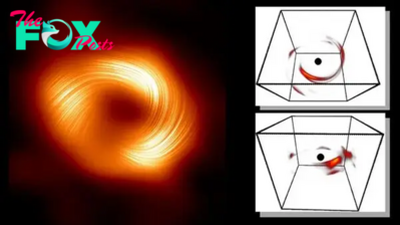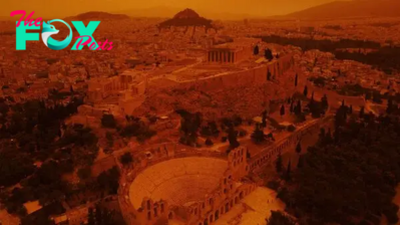Science
Why did the atomic bomb dropped on Hiroshima leave shadows of people etched on sidewalks?
Christopher Nolan's Oscar-winning biopic Oppenheimer has reignited public interest in the historic race to develop atomic weapons.
Yet, while the film dwells on J. Robert Oppenheimer's uneasy conScience and his fear of a future nuclear war, being told from his perspective, it doesn't show the direct consequences of the Hiroshima and Nagasaki bombings. Yet on the streets of the two stricken cities, the horrifying evidence was plain to see.
Black shadows of humans and objects, like bicycles, were found scattered across the sidewalks and buildings of Hiroshima and Nagasaki, two of the largest cities in Japan, in the wake of the atomic blast detonated over each city on Aug. 6 and 9, 1945, respectively.
It's hard to fathom that these shadows likely encapsulated each person's last moments, similar to the ashen casts of ancient volcano victims preserved at Pompeii. But how did these shadows come to be?
According to Dr. Michael Hartshorne, emeritus trustee of the National Museum of Nuclear Science and History in Albuquerque, New Mexico, and professor emeritus of radiology at the University of New Mexico School of Medicine, when each bomb exploded, the intense light and heat spread out from the point of implosion. Objects and people in its path shielded objects behind them by absorbing the light and energy. The surrounding light bleached the concrete or stone around the "shadow."
In other words, those eerie shadows are actually how the sidewalk or building looked, more or less, before the nuclear blast. It's just that the rest of the surfaces were bleached, making the regularly colored area look like a dark shadow.
Related: Why do nuclear bombs form mushroom clouds?
-

 Science2d ago
Science2d agoEnormous explosion in 'Cigar Galaxy' reveals rare type of star never seen beyond the Milky Way
-

 Science2d ago
Science2d agoAn Animated Guide to the Rare 2024 Cicada Co-Emergence
-

 Science2d ago
Science2d agoHow Cloud Seeding Works and Why It’s Wrongly Blamed for Floods From Dubai to California
-

 Science3d ago
Science3d agoExplosive black hole flare from the center of our galaxy reconstructed from 'a single flickering pixel' using AI and Einstein's equations
-

 Science3d ago
Science3d ago4 solar flares simultaneously erupt from the sun in rare 'super' explosion — and Earth could be hit by the fallout
-

 Science3d ago
Science3d agoAn extra moon may be orbiting Earth — and scientists think they know exactly where it came from
-

 Science3d ago
Science3d agoAfter months of sending gibberish to NASA, Voyager 1 is finally making sense again
-

 Science3d ago
Science3d agoMassive heat wave and a supercell thunderstorm caused deadly, baseball-sized hailstones to rain down on Spain



























